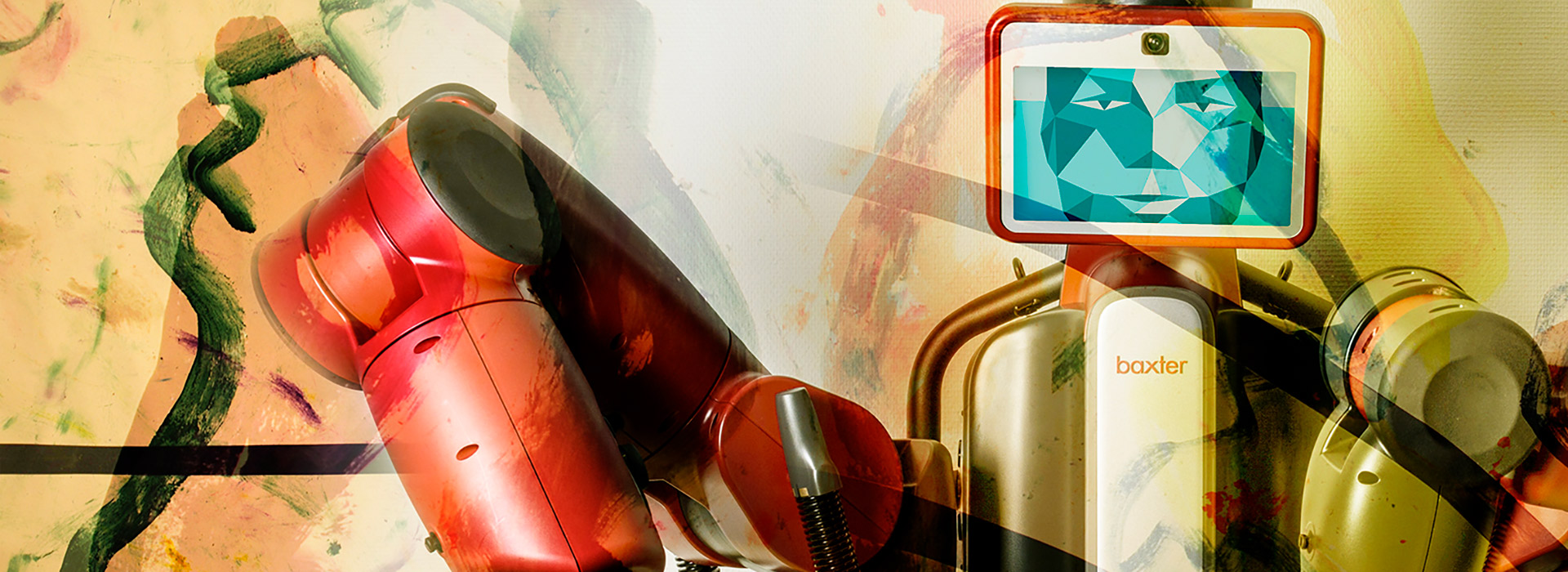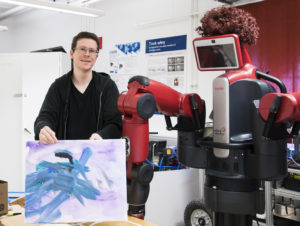
Halmstad University’s social robot Baxter can create paintings that express human emotions. Last year, Baxter’s paintings successfully participated in an international robot art competition. The emotions were transferred to the robot by brain waves from a famous Swedish artist, Peter Wahlbeck. This year, the robot art has reached the next level – Baxter has learned to paint as a performance, showing emotions itself and infusing these feelings into artwork.
Winning sixth place in last year’s international robot art competition encouraged the Halmstad research team to further develop the social robot Baxter’s emotional artwork. Robot art has also become a compulsory part of the Master’s Programme in Embedded and Intelligent Systems at Halmstad University.
– Last year, Baxter painted with a frozen, blank face. Only the paintings expressed emotions, so it was like a computer printer just printing images. This year we wanted the robot too to show emotions, says social robotics researcher Martin Cooney.
In order for social robots to successfully interact with and help humans, they need to be given “life”, complexity and randomness.
– Martin Cooney
Robots need to be given “life”
Martin Cooney and his fellow researchers at the School of Information Technology want to be more creative and innovative in their development of social robotics, and robot art is one example of this.
– Robots in factories might follow rigid programs – do this, do that.. But that’s not how humans work. In order for social robots to successfully interact with and help humans, they need to be given “life”, complexity and randomness. The robot has to be able to both sense human emotions and express feelings of its own – just like humans do, says Martin Cooney.
Six paintings from Halmstad University have been sent to the 2018 International Robotic Art Competition. A team of 24 Master’s students created the backgrounds of all paintings by using random movements of small platooning robots. The foreground was painted by Baxter, programmed to show a certain emotion through its ‘face’ and sound.
Martin Cooney and Baxter at the robot art competition last year when Baxter created paintings that express human emotions. This year, Baxter has learned how to show it’s own feelings through art.
Text: Louise Wandel
Photo: Hanna Carmvall



